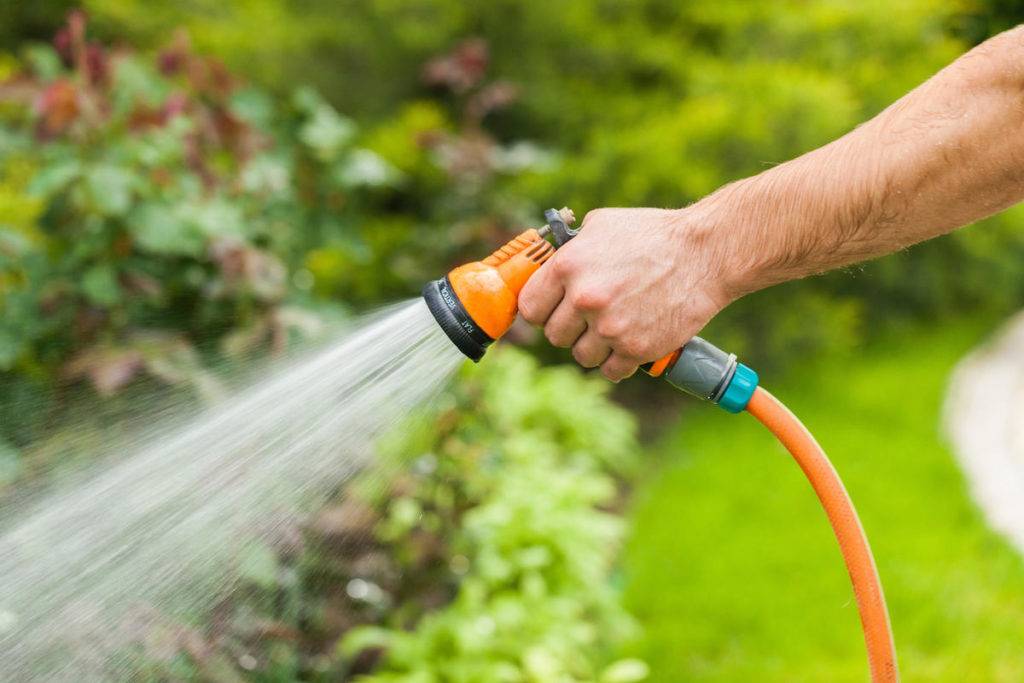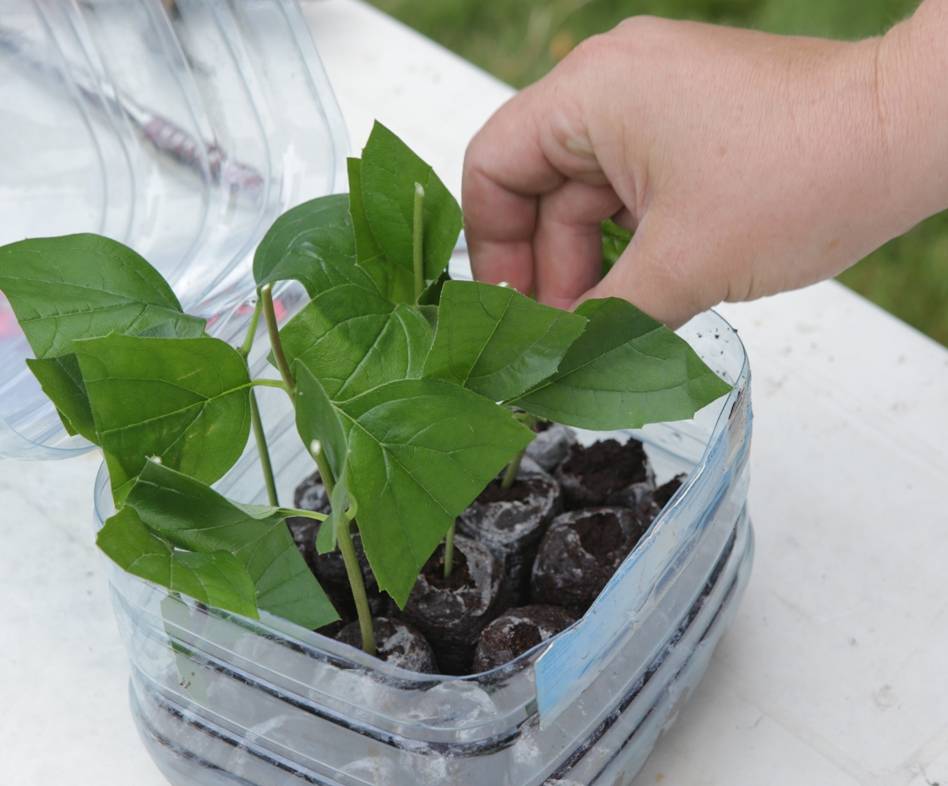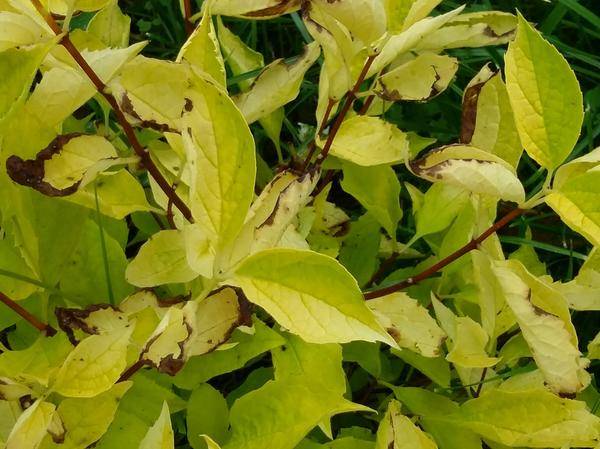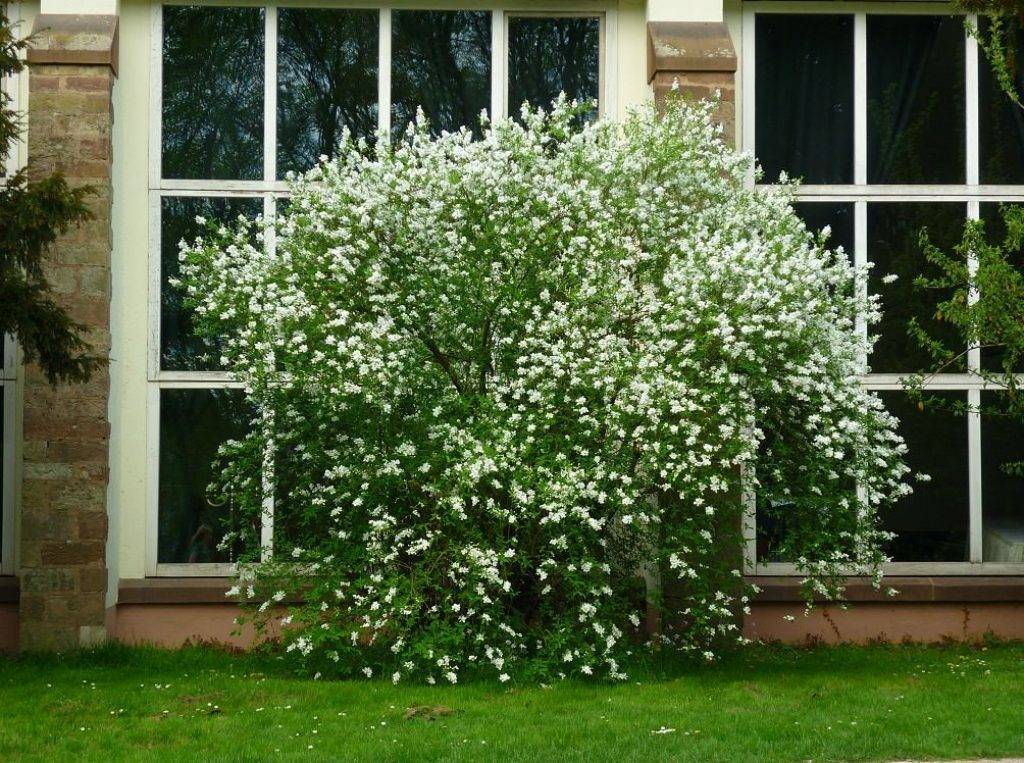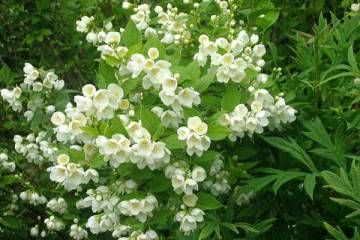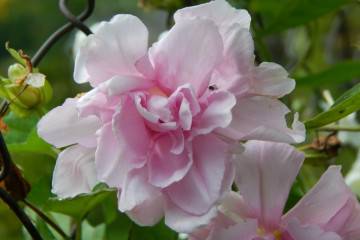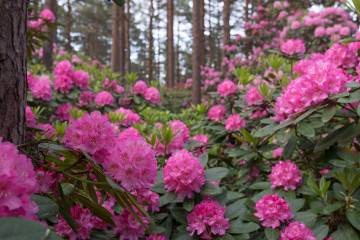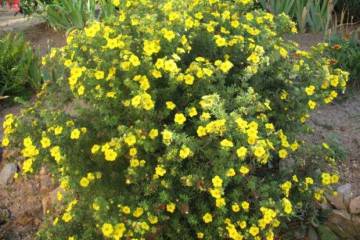Chubushnik Lemoine - description, planting and care
Content:
Chubushnik Lemoine (Philadelphus Lemoinei) is a highly decorative shrub, the main asset of which is beautiful snow-white fluffy buds. They are located throughout the crown of the plant and exude an unobtrusive pleasant aroma. Because of the external similarity, the mock-orange is popularly called jasmine, some varieties of Lemoine are really hard to distinguish from this flower. The plant will look beautiful both in composition with other tall flowering shrubs, and planted separately.
Description of Lemoine's chubushnik
The description of the Lemoine mock-orange is almost the same as for other subspecies of this plant, such as Charm or Glacier. This variety of chubushnik was bred by breeding by crossing frost-resistant and decorative varieties.
Small ovoid leaves of the chubushnik are jagged along the edges. At the beginning of the growing season, the foliage acquires a slightly yellowish tint, then turns green, and with the approach of autumn again changes color to yellow.
The shrub begins to open its buds in May, flowering continues until the end of June. The buds are medium in size, 5 to 10 cm in diameter. The oval petals are white and velvety to the touch.
Planting a plant
When planting Lemoine's Glacier chubushka in open ground, many factors must be taken into account:
- the most favorable place for growing;
- finding groundwater;
- the quality and acidity of the soil;
- preparation of planting material;
- correct step-by-step landing.
Planting from seeds
Hybrid varieties are rarely grown using seeds, but this method is practiced with the Lemoine variety. The seeds must first be grown as seedlings; this procedure is carried out in the late stages of winter. Around the second half of February, a substrate is prepared for planting from loose earth, peat, river sand and humus.
The seeds also need preparation. For disinfection, they are covered with gauze soaked in a solution of potassium permanganate.
The seeds are buried 1-2 cm into the ground, lightly press down on the ground with your hand from above. Thoroughly watered with soft, pre-set at room temperature, water. From above, for a greenhouse greenhouse effect, they are covered with a film. Seedlings will appear in 2-3 weeks.
Planting seedlings in open ground
Chubushnik Glacier or Charm is planted in open ground after thawing the ground in the sun. First, you need to prepare a site that is chosen above the groundwater by 1 m. For good and abundant flowering, you need a place open to the sun's rays, which will protect from drafts on the north side.
Step-by-step planting of Lemoine in the open ground in the garden:
- Dig a hole 40-50 cm wide and deep and place drainage material on the bottom.
- Cover the nutrient substrate from peat, humus and sod land in a small layer over the drainage.
- Place the seedling in the hole and, holding it with your hand, cover with the remaining potting soil.
- Thoroughly tamp the soil on top to fix the seedling.
- Drizzle with soft water at room temperature.
- Mulch with rubble, sawdust or dry foliage.
How to care for Lemoine's chubushnik
Shrub maintenance is simple but requires regular activities. The main points to which you should pay special attention in cultivation are good lighting and timely feeding.
Watering
Chubushnik is not particularly picky about watering, tolerates dry periods, but is less resistant to abundant overflows. During rainy periods, watering should be stopped, and during hot periods, on the contrary, more frequent.
During the growing season, young shrubs should be watered once every 7-10 days, older trees - once every two weeks. Two buckets of water are spent on one plant. The watering liquid should be soft and slightly warm, river or rainwater will work well.
Top dressing
Fertilize the chubushnik regularly with both organic and mineral preparations. The first spring feeding should be carried out with manure with humus and urea or saltpeter. During the growing season, the bush is fed every two weeks with complex mineral fertilizers.
The last fertilization is carried out two weeks before the shelter for the winter. Then organic matter and a complex mineral preparation are introduced.
Pruning
Sanitary pruning must be done in spring and autumn. After wintering, rotten shoots are cut off near the bush, and in the fall, dried foliage and dead branches are removed.
It is also recommended to cut the branches to form the crown. It is enough to carry out such a procedure every 3-4 years at a young age and every 4-5 years in an adult. Cut off completely old shoots, and in younger branches - the upper part of 40 cm.
Reproduction methods
Chubushnik The charm of Lemoine can be propagated by cuttings, dividing an adult bush and layering.
To propagate a bush with cuttings, you need to cut segments from an annual shoot. Cuttings can be immediately planted in open ground, before that they need to be dug up and fertilized. Then it is necessary to deepen the cuttings and water the soil. Cover the top with a plastic or glass dome.
Divide the bush carefully, as there is a possibility of damage to the root system. The plant is dug up and carefully divided into several even parts with a sharp knife. Each bush is planted in a separate hole.
For reproduction by layering, the lateral shoot is bent to the ground and buried in the ground, if necessary, fix it with a bracket. Once the cuttings have taken root, you can separate them from the mother shrub.
Diseases and pests
Chubushnik very rarely gets sick, the problem can arise only from abundant watering. This will be indicated by the darkened edges of the leaf plates of the shrub.
Pests also do not particularly bother the plant, sometimes not very dangerous leaf-eating insects may appear, which are destroyed by treating the bush with insecticides.
Preparing for winter
The shrub winters well without shelter in the southern and middle latitudes, it is enough to protect its branches from snow. To do this, twist the branches with a tourniquet and cover the root part with dry foliage or peat.
If Lemoine varieties are grown in northern regions, then it is better to protect the bush. After pruning the plant, its near-stem circle is mulched and spud with earth and sawdust. Twist the branches with wire and wrap it with spunbond on top.
Use in landscape design
Lemoine's chubushnik is highly valued by gardeners because of its high decorative effect. Its beautiful and abundant flowering makes it popular in landscape design. Lemoine looks spectacular both separately and in combination with other plants.
It is very common to decorate garden hedges, driveways, garden plots, park compositions with a chubushnik. Because of its unobtrusive aroma, the plant is planted when decorating an urban environment.
Beneficial features
Chubushnik is often used in the design of parks and other urban areas because of its useful property to remove harmful elements from the air. The plant cleanses it, saturates it with oxygen and depletes the pleasant aroma around it.
Chubushnik Lemoine is an incredibly beautiful plant that does not require difficult and costly care. In addition, the shrub has high winter hardiness and practically does not get sick. Chubushnik will give coziness to even the most ordinary-looking area and cleanse the air of harmful substances.

